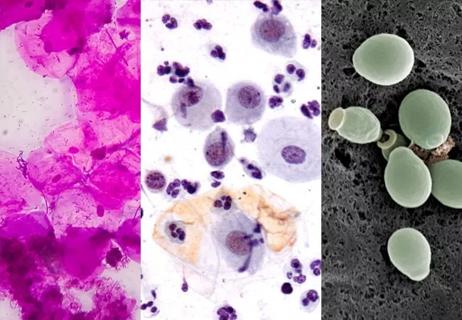Egg and embryo freezing remain the gold standard

By Rebecca Flyckt, MD
Advertisement
Cleveland Clinic is a non-profit academic medical center. Advertising on our site helps support our mission. We do not endorse non-Cleveland Clinic products or services. Policy
Within the urgency of a cancer diagnosis, there may be limited time to talk about the impact life-saving treatments can have on reproduction. Up to 75 percent of survivors are interested in having children after cancer treatments, yet few women are offered fertility preservation options. In our fertility practice, we see many women on the other side of cancer who grapple with lost fertility.
Only 2 percent of women with cancer pursue fertility preservation (compared to 60 percent of their male counterparts) due to multiple factors including fear of delaying treatment. Lack of provider knowledge or understanding of a patient’s wishes also can be a barrier. Clinicians may assume a patient wouldn’t be interested in learning about fertility preservation because of her age (our patients have ranged in age from 4 to 45) or because she already has a child.
Another big deterrent to fertility preservation is financial burden. At Cleveland Clinic, we have established partnerships to assist with this and are encouraged by legislation (most recently Illinois House Bill 2617 in August) requiring health insurance companies to cover the preservation of eggs, sperm and embryos for patients with cancer.
Egg and embryo freezing remain the gold standard. Huge advances have resulted in virtually no delay of cancer treatment. We can start treatment cycles within a day or two of referral and complete the fertility preservation cycle in two to three weeks. New, safe protocols reduce the risk of complications for cancer patients, and studies show that babies from egg and embryo freezing are healthy.
Advertisement
Ovarian transposition is a same-day, minimally invasive surgery performed prior to planned pelvic radiation. The procedure involves moving the ovary from its normal anatomic position out of the field of radiation. Ovary transposition has success rates in preserving ovarian function as high as 60 to 80 percent. Important to note, however, is that pelvic radiation may still have significant effects on the function of the uterus. Women exposed to pelvic radiation may stop having periods, or may have pregnancy complications such as miscarriage, fetal growth restriction, early delivery, or placental dysfunction. For that reason, uterine transposition has now been described. This new option in reproductive transplantation is designed to leave the uterus connected to its blood supply but position it outside of the pelvis temporarily during radiation treatments. It can then be moved back to a normal anatomic location after treatments for future pregnancy.
Ovarian tissue vitrification is an experimental procedure that involves removing one ovary along with its ovarian cortex, which is the portion of the ovary that contains the eggs. We vitrify and store very thin strips of the ovarian tissue with the possibility of re-implanting them into the pelvis after cancer treatment. This procedure has resulted in approximately 100 live births worldwide, many of which have been spontaneous (non-IVF) pregnancies. This is exciting technology with strong potential but is only being offered in the United States under an Institutional Review Board (IRB)-approved protocol. To date, we’ve frozen ovarian tissue primarily for prepubertal girls who didn’t have the option of egg freezing.
Advertisement
Gonadotropin Releasing Hormone Antagonist (GnRHa) is an injected hormone that can be given during chemotherapy to protect and preserve ovarian function. Halle Moore, MD, medical oncologist from Cleveland Clinic, has published landmark research in the New England Journal of Medicine supporting that these injections protect the ovaries from the harmful effects of chemotherapy for women with breast cancer. Rather than simply looking at the endpoint of resuming regular menses after cancer treatments, this study included rates of pregnancy and livebirth, which are the endpoints that really matter to our patients.
Advertisement
Advertisement

Women’s Comprehensive Health and Research Center addresses unmet needs

How we create obstacles for sexual, reproductive and menopausal healthcare despite our best intentions

One approved non-hormonal therapy and another on the horizon reduce vasomotor symptoms

Some post-menopausal patients may benefit from treatment

Study shows higher rates of complications, laparotomies among non-white women

Proper diagnosis and treatment require a careful mix of patient and clinical considerations

Study uniquely powered to compare adverse effects

What is female hypoactive sexual desire disorder and how is it treated?